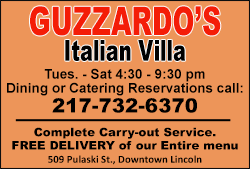|
Iraq declares end of caliphate after
capture of historic Mosul mosque
 Send a link to a friend
Send a link to a friend
 [June 29, 2017]
MOSUL, Iraq (Reuters) - After eight
months of grinding urban warfare, Iraqi government troops on Thursday
captured the ruined mosque in Mosul from where Islamic State proclaimed
its self-styled caliphate three years ago, the Iraqi military said. [June 29, 2017]
MOSUL, Iraq (Reuters) - After eight
months of grinding urban warfare, Iraqi government troops on Thursday
captured the ruined mosque in Mosul from where Islamic State proclaimed
its self-styled caliphate three years ago, the Iraqi military said.
Iraqi authorities expect the long battle for Mosul to end in the coming
days as the remaining Islamic State fighters are now bottled up in just
a handful of neighborhoods of the Old City.
The seizure of the 850-year-old Grand al-Nuri Mosque is a huge symbolic
victory for the Iraqi forces fighting to recapture Mosul, which had
served as Islamic State's de facto capital in Iraq.
"Their fictitious state has fallen," an Iraqi military spokesman,
Brigadier General Yahya Rasool, told state TV.
The insurgents blew up the medieval mosque and its famed leaning minaret
a week ago as U.S.-backed Iraqi forces started a push in its direction.
Their black flag had been flying from al-Hadba (The Hunchback) minaret
since June 2014.
Prime Minister Haider al-Abadi "issued instructions to bring the battle
to its conclusion," his office said.
The fall of Mosul would in effect mark the end of the Iraqi half of the
IS caliphate even though the hardline group would still control
territory west and south of the city. Its capital in Syria, Raqqa, is
also besieged by a U.S.-backed Kurdish-led coalition.

The cost of the battle has been enormous, however. In addition to
military casualties, thousands of civilians are estimated to have been
killed.
About 900,000 people, nearly half the pre-war population of the northern
city, have fled the battle, mostly taking refuge in camps or with
relatives and friends, according to aid groups.
Those trapped in the city suffered hunger and deprivation as well as
death or injury, and many buildings have been ruined.
ARDUOUS TASK
Counter Terrorism Service (CTS) troops captured the al-Nuri Mosque's
ground in a "lightning operation" on Thursday, a commander of the
U.S.-trained elite units told state TV.
Civilians living nearby were evacuated in the past days through
corridors, he added.
CTS units are now in control of the mosque area and the al-Hadba and
Sirjkhana neighborhoods and they are still advancing, a military
statement said.
A U.S.-led international coalition is providing air and ground support
to the Iraqi forces fighting through the Old City's maze of narrow
alleyways.
But the advance remains an arduous task as the insurgents are dug in the
middle of civilians, using mortar fire, snipers, booby traps and suicide
bombers to defend their last redoubt.
[to top of second column] |

Al-Hadba minaret at the Grand Mosque is seen through a building
window in the old city of Mosul, Iraq June 1, 2017. REUTERS/Alaa
Al-Marjani/File Photo

The military estimated up to 350 militants were still in the Old
City last week but many have been killed since.
They are besieged in one sq km (0.4 square mile) making up less than
40 percent of the Old City and less than one percent of the total
area of Mosul, the largest urban center over which they held sway in
both Iraq and Syria.
Those residents who have escaped the Old City say many of the
civilians trapped behind IS lines -- put last week at 50,000 by the
Iraqi military -- are in a desperate situation with little food,
water or medicines.
Baghdadi proclaimed himself "caliph," or ruler of all Muslims, from
the Grand al-Nuri Mosque's pulpit on July 4, 2014, after the
insurgents overran vast swathes of Iraq and Syria.
His speech from the mosque was the first time he revealed himself to
the world and the footage broadcast then is to this day the only
video recording of him as "caliph".
He has left the fighting in Mosul to local commanders and is
believed to be hiding in the border area between Iraq and Syria,
according to U.S. and Iraqi military sources.
Islamic State last week broadcast a video showing much of the mosque
and brickwork minaret reduced to rubble. Only the stump of the
Hunchback remained, and a dome of the mosque supported by a few
pillars which resisted the blast.
The mosque was named after Nuruddin al‑Zanki, a noble who fought the
early Crusaders from a fiefdom that covered territory in modern-day
Turkey, Syria and Iraq. It was built in 1172-73, shortly before his
death, and housed an Islamic school.

The Old City's stone buildings date mostly from the medieval period.
They include market stalls, a few mosques and churches, and small
houses built and rebuilt on top of each other over the ages.
(Reporting by Maher Chmaytelli,; Editing by Angus MacSwan)
[© 2017 Thomson Reuters. All rights
reserved.]
Copyright 2017 Reuters. All rights reserved. This material may not be published,
broadcast, rewritten or redistributed. |